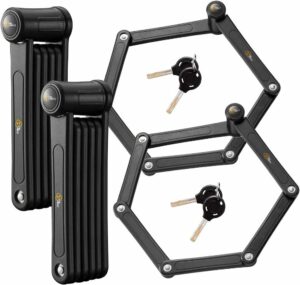What is an Electric Bike?
Key Takeaways
- Electric bikes incorporate a battery-powered “assist” that comes through pedaling and sometimes a throttle.
- They enhance mobility, making climbing hills and covering longer distances easier without excessive fatigue.
- E-bikes are environmentally friendly, reducing reliance on fossil fuels and emitting zero direct emissions.
- They come in various styles to suit different needs, including urban commuting, off-road adventuring, and cargo hauling.
- E-bikes represent a cost-effective alternative to traditional vehicles, especially for short to medium-distance travel.
Embarking on the Electric Avenue: The Electric Bike Revolution Unveiled
An electric bike, commonly referred to as an e-bike, merges the traditional mechanics of a bicycle with the innovative technology of an electric motor. This synergy creates a versatile mode of transportation that amplifies human power with electrical power. Designed for efficiency, ease, and eco-friendliness, e-bikes are gaining popularity among people of all ages for commuting, recreation, and fitness. This article delves into what makes e-bikes a revolutionary tool in modern transportation, appealing to avid cyclists and newcomers alike.

Empower Your Ride: Exploring the Core Features of Electric Bikes
Embarking on an e-bike journey introduces you to a world where efficiency meets innovation. As the popularity of electric bikes surges, understanding the intricate features and components that define them becomes essential. From the whisper-quiet hum of the motor to the resilience of the frame, each element of an e-bike is designed to enhance your riding experience. This section shines a light on the core features of e-bikes, guiding you through the technological marvels that empower your ride.
Electric Motor Types:
 Hub Motor: Positioned in the center of a wheel, hub motors propel the bike forward without relying on the chain drive. This type offers a balanced ride and can be found in both front and rear wheel configurations.
Hub Motor: Positioned in the center of a wheel, hub motors propel the bike forward without relying on the chain drive. This type offers a balanced ride and can be found in both front and rear wheel configurations.
Mid-Drive Motor: Located around the bike’s cranks, it delivers power directly to the bike’s drivetrain. Mid-drive motors are known for their efficiency and better weight distribution, providing a natural riding feel, especially on hills.
Battery Life:
Battery life is a critical factor in determining an e-bike’s range. Modern e-bikes are equipped with lithium-ion batteries due to their lightweight, long lifespan, and high capacity. The range can be influenced by factors such as rider weight, terrain, and level of assist used.
Charge Time:
The convenience of an e-bike also hinges on its charge time. Faster charging batteries enable more frequent use, making e-bikes a viable option for daily commuting and long-distance tours alike.
Top Speed:
The top speed of an electric bike is often regulated by law, with most countries having specific classifications based on the bike’s power output and speed capabilities. These regulations help ensure the safety of both the rider and pedestrians.
Weight:
While the additional weight of the motor and battery makes e-bikes heavier than their non-electric counterparts, advances in materials and design continue to reduce their overall weight, making them easier to handle and transport.
Frame Materials:
The choice of frame material impacts the bike’s weight, durability, and ride quality. Aluminum offers a good balance of strength and lightness, carbon fiber is prized for its lightweight and vibration-damping properties, while steel is renowned for its durability and smooth ride.
Wheel Size:
Wheel size affects an e-bike’s handling and performance. Smaller wheels accelerate faster and are more maneuverable, making them suitable for urban environments. Larger wheels offer better stability and are ideal for off-road conditions.

Braking System:
Effective braking is crucial for safety, especially given the higher speeds and weights of e-bikes. Disc brakes, both mechanical and hydraulic, provide superior stopping power and performance in various weather conditions, making them a standard choice for most electric bikes.
Drivetrain:
The drivetrain, which includes the gears and chain, plays a vital role in an e-bike’s performance by determining how efficiently power is transferred from the motor to the wheels. Options range from single-speed systems to multi-gear setups, catering to different riding styles and terrains.
Display and Controls:
Modern e-bikes feature LCD or LED displays that provide riders with information such as speed, battery level, distance traveled, and assist level. Controls are typically mounted on the handlebars for easy access, allowing riders to adjust the level of assistance and engage the throttle or lights without removing their hands from the handlebars.
Suspension:
Suspension systems, including front forks and rear shock absorbers, improve comfort and handling on uneven surfaces. While not all e-bikes have full suspension, those designed for off-road use or rough urban streets often include it to absorb bumps and provide a smoother ride.
The components and features of an e-bike work in harmony to deliver a riding experience that’s unmatched by traditional bicycles. By familiarizing yourself with the essence of what makes an e-bike, you’re not just choosing a mode of transport; you’re embracing a future where mobility is defined by innovation, sustainability, and sheer joy. Whether you’re navigating city streets or exploring rugged trails, the insights into e-bike features ensure you’re well-equipped to select a bike that aligns with your lifestyle and aspirations. Embrace the power, enjoy the ride, and witness how an e-bike can transform your journey.
Electrifying Journeys: Analysis of E-Bike Performance
E-bikes are redefining the cycling experience, merging traditional pedal power with electric energy for an unparalleled ride. This detailed review delves into the core attributes that set electric bikes apart from their conventional counterparts. By comparing performance, design, utility, and technology, we uncover the unique advantages e-bikes offer, highlighting how they’re transforming personal transportation.
Performance and Power: The Unseen Force
E-bikes introduce a level of performance that traditional bicycles can’t match, primarily due to their electric motors. Where conventional bikes rely solely on muscle power, e-bikes offer pedal assistance, reducing rider fatigue and enabling higher speeds with less effort. The difference is most palpable on inclines: hills that would slow a regular bike to a crawl are conquered with ease on an e-bike, thanks to the motor’s extra push. This power assist means riders can travel further without the exhaustion associated with traditional cycling, making e-bikes a game-changer for both commuting and leisure rides.
Design and Comfort: Crafting the Ride
When it comes to design, e-bikes are built with rider comfort in mind, integrating ergonomic features that enhance the cycling experience. Traditional bikes often require compromises between weight and durability, but e-bikes leverage their motor’s power to accommodate heavier, more comfortable designs without sacrificing performance. For example, e-bikes frequently feature wider tires for improved stability and shock absorption, along with adjustable components like handlebars and seats that tailor the bike to the rider’s body, ensuring comfort on long rides.
Utility and Features: Beyond the Basics
Utility is another area where e-bikes shine, offering features that extend their functionality beyond that of traditional bicycles. With built-in lighting systems, electronic displays, and even regenerative braking, electric bikes are equipped for safety and convenience in ways non-electric bikes are not. Cargo-carrying models demonstrate the utility of e-bikes further, enabling riders to transport goods effortlessly, thanks to electric assistance. These practical features make e-bikes more than just a mode of transport; they’re versatile tools suited for a variety of needs and activities.
Innovative Technology: Pioneering Progress
The technological advancements in e-bikes offer a stark contrast to the more static development of conventional bikes. From smart connectivity that allows for GPS tracking and ride analytics to adjustable power settings that customize the riding experience, e-bikes are at the forefront of cycling innovation. This technological edge not only enhances the ride but also integrates e-bikes into the digital age, offering riders insights into their performance and health in ways that traditional bikes simply cannot match.
Environmental Impact: A Greener Path Forward
In terms of environmental impact, e-bikes represent a significant step forward in sustainable transportation. Unlike conventional bikes, which are already eco-friendly, e-bikes extend the accessible range and appeal of cycling, potentially replacing car trips for commuting and errands. This shift can significantly reduce one’s carbon footprint and contribute to decreased urban congestion and pollution, underscoring e-bikes’ role in promoting a cleaner, greener future.
The detailed review of e-bike features reveals a transformative approach to cycling, blending tradition with modern technology for an improved riding experience. From their powerful performance to their ergonomic design, versatile utility, and cutting-edge technology, e-bikes offer a compelling alternative to conventional bicycles. They not only cater to a broader range of needs and preferences but also align with growing environmental consciousness. As we pedal into the future, e-bikes stand out as a testament to innovation, offering a smarter, more sustainable, and ultimately more enjoyable way to move through the world.
PROS and CONS
PROS
- Increases accessibility and encourages more people to cycle.
- Reduces physical strain, making it easier to tackle challenging terrains.
- Eco-friendly alternative to fossil-fuel-powered vehicles.
- Saves money on commuting costs.
- Enhances the joy of cycling with less effort required.
CONS
- Higher initial cost compared to traditional bicycles.
- Heavier, which may affect handling and transportation when not riding.
- Requires charging and occasional maintenance of electronic components.
Finding Your Perfect Electric Bike Match
In the dynamic landscape of personal transportation, e-bikes emerge as a versatile solution catering to a diverse audience with varying needs and aspirations. Their adaptability across different environments and suitability for a broad spectrum of riders underscore the e-bike revolution’s inclusive nature. This section explores how the varied types of e-bikes are tailored to fit the unique lifestyles, preferences, and environments of riders, ensuring there’s an ideal e-bike for everyone.
The Commuter’s Companion

For urban dwellers and daily commuters, city e-bikes and folding electric bikes offer a seamless blend of convenience and efficiency. City e-bikes, with their upright seating and practical features such as integrated lights, racks, and fenders, make navigating through busy streets and bike lanes a breeze, turning the daily commute into a joyful experience. Folding e-bikes add an extra layer of convenience for those with limited storage space or the need to combine biking with public transportation, easily transforming to fit into trains, buses, or small apartments.
The Adventurer’s Ally
 Electric Mountain bikes and fat tire electric bikes are designed for thrill-seekers and adventure enthusiasts who crave off-road exploration. E mountain bikes come equipped with robust suspension systems, powerful motors, and durable frames, ready to tackle steep climbs and rugged terrains. Fat tire e-bikes, known for their wide, traction-rich tires, excel in environments where traditional bikes might falter, such as sandy beaches, snowy paths, or muddy trails, offering stability and confidence on every adventure.
Electric Mountain bikes and fat tire electric bikes are designed for thrill-seekers and adventure enthusiasts who crave off-road exploration. E mountain bikes come equipped with robust suspension systems, powerful motors, and durable frames, ready to tackle steep climbs and rugged terrains. Fat tire e-bikes, known for their wide, traction-rich tires, excel in environments where traditional bikes might falter, such as sandy beaches, snowy paths, or muddy trails, offering stability and confidence on every adventure.
The Cargo Carrier
 Electric cargo bikes are the workhorses of the e-bike world, perfect for families and businesses needing to haul goods or transport kids. With sturdy frames and enhanced motor support, these e-bikes can carry heavy loads without sacrificing performance, making them an eco-friendly alternative to cars for grocery runs, school drop-offs, or small business deliveries. When seeking an electric cargo bike, ensure to check the maximum limits for your purpose.
Electric cargo bikes are the workhorses of the e-bike world, perfect for families and businesses needing to haul goods or transport kids. With sturdy frames and enhanced motor support, these e-bikes can carry heavy loads without sacrificing performance, making them an eco-friendly alternative to cars for grocery runs, school drop-offs, or small business deliveries. When seeking an electric cargo bike, ensure to check the maximum limits for your purpose.
The Leisure Seeker
For those who ride for leisure or have physical limitations, step-through e-bikes and electric tricycles provide easy access and stable riding experiences. Step-through frames make mounting and dismounting effortless, inviting more people to enjoy cycling, regardless of mobility issues or attire. Electric tricycles, with their three-wheel stability, offer a safe and comfortable option for seniors or those seeking extra support during their rides.

E-bikes stand as a testament to the power of choice and innovation in personal mobility. From the bustling city streets to the serene countryside, the diverse range of e-bike models ensures that whether you’re a commuter, adventurer, cargo hauler, or leisure seeker, there’s an e-bike tailored to your lifestyle and environment. By recognizing the unique demands of different riders and adapting technology to meet these needs, e-bikes not only enrich our travel experience but also pave the way for a more accessible, sustainable, and enjoyable future in cycling.
Navigating the E-Bike Experience: Voices from the Road
The e-bike revolution is propelled not just by technology and design but by the stories and experiences of riders themselves. These insights offer a window into the real-world impact of e-bikes, highlighting the joys, challenges, and unexpected benefits as reported by the community. By exploring the collective wisdom of e-bike enthusiasts, we gain a nuanced understanding of what it means to integrate electric bikes into our lives.
Riding High: The Celebrated Advantages
-
Performance Boost: Riders frequently share stories of how e-bikes have revitalized their commuting and recreational riding. Tales of effortlessly gliding past traditional cyclists on climbs and the thrill of reaching destinations quicker underscore the performance edge e-bikes provide. For instance, a user reported halving their commute time, turning a tedious journey into an enjoyable part of their day.
-
Design and Comfort: The ergonomic design of e-bikes garners appreciation for transforming comfort on two wheels. Features like adjustable handlebars, plush seats, and step-through frames are celebrated for making rides more accessible and enjoyable. A notable mention from users is the relief of joint pressure, making biking pleasant again for those with knee issues.
-
 Value for Money: Despite the higher initial cost, many riders view their e-bike as a valuable investment. The savings on gas, public transport fares, and parking fees, coupled with the health benefits, often outweigh the upfront expense. A rider highlighted how their e-bike replaced the need for a second car, offering substantial long-term savings.
Value for Money: Despite the higher initial cost, many riders view their e-bike as a valuable investment. The savings on gas, public transport fares, and parking fees, coupled with the health benefits, often outweigh the upfront expense. A rider highlighted how their e-bike replaced the need for a second car, offering substantial long-term savings. -
Customer Service Excellence: Positive experiences with e-bike manufacturers and retailers build trust and satisfaction within the community. Stories of responsive support, helpful assembly instructions, and reliable warranties amplify the overall positive sentiment towards e-bike brands.
Weighing the Scale: Encountered Challenges
-
Weight Consideration: The added weight of e-bikes, while indicative of durable construction and onboard technology, poses handling challenges for some. Users mention the difficulty of carrying e-bikes upstairs or loading them onto bike racks, suggesting potential areas for design innovation.
-
Maintenance Mastery: The complexity of e-bikes can intimidate newcomers, with the maintenance of electronic components seeming daunting. However, many riders also share their journey of becoming more technologically savvy, turning initial apprehension into a rewarding learning experience.
-
Investment Hurdle: The upfront cost remains a barrier for some potential riders. Yet, user testimonials often counter this point with personal accounts of the e-bike’s cost-effectiveness over time, considering the reduction in transportation expenses and minimal maintenance costs.
Beyond the Ride: Additional Reflections
-
Versatility in Action: The adaptability of e-bikes to various lifestyles and needs is a recurring theme. Whether it’s facilitating a return to fitness, enabling adventurous off-road explorations, or simplifying daily errands, the versatility of e-bikes enriches riders’ lives in multifaceted ways.
-
Community Spirit: The sense of belonging to a growing e-bike community is a source of joy for many. Group rides, online forums, and local meetups foster a supportive and encouraging environment, where experiences, tips, and stories are shared, enhancing the e-bike journey for all involved.

The collective insights of e-bike riders paint a picture of transformation and empowerment. Through the blend of challenges and triumphs, a narrative of progress emerges, highlighting the significant role e-bikes play in enhancing personal mobility, environmental sustainability, and community connection. As we pedal forward, the riders’ voices remain a crucial compass, guiding the evolution of e-bikes to meet the diverse needs and dreams of cyclists around the globe.
Powering Forward: Embracing the Revolution of Electric Bicycles
As our journey through the electric bike landscape comes to a close, it’s clear that e-bikes are much more than a mere cycling trend. They represent a pivotal shift in how we perceive mobility, fitness, and environmental stewardship. The fusion of traditional pedal power with electric innovation offers a versatile, efficient, and joyous way to navigate the complexities of modern life. From enhancing daily commutes to redefining recreational adventures, e-bikes have proven their worth on multiple fronts.
E-bikes break down barriers to cycling, making it accessible and appealing to a broader audience. Whether it’s overcoming physical limitations, tackling daunting hills, or simply seeking a more sustainable mode of transport, e-bikes offer a compelling solution. Their growing popularity underscores a collective desire for smarter, cleaner, and more inclusive mobility options.
Moreover, the personal stories and insights from riders illuminate the profound impact e-bikes have on individuals and communities. These narratives of transformation and connection are a testament to the e-bike’s role not just as a vehicle, but as a catalyst for change. By addressing the challenges of urban congestion, promoting health and wellness, and fostering a sense of community, e-bikes contribute to a brighter, more sustainable future.
In conclusion, the e-bike revolution is here to stay, powered by the synergy of technology, sustainability, and human aspiration. As we pedal into this new era, the potential for growth and innovation in e-biking is boundless. Embracing the e-bike revolution means not just changing the way we move, but reimagining the possibilities of our collective journey towards a more connected and sustainable world.







